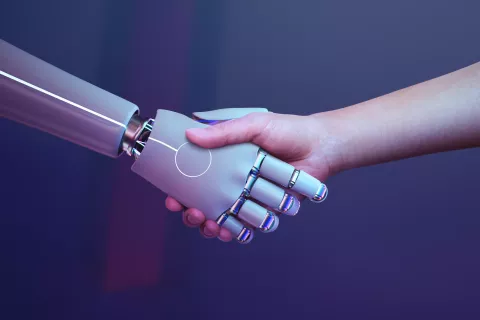In an age where misinformation spreads faster than verified news, the role of fact-checking has never been more crucial — or more challenging. With the explosion of digital content and social media platforms amplifying false narratives, manual verification alone can no longer keep pace. This is where Artificial Intelligence (AI) steps in, ushering in a new era of automated, scalable, and data-driven fact-checking that could redefine how truth is maintained in journalism.

Why Fact-Checking Needs Reinvention
Traditional fact-checking is labor-intensive and time-consuming. Journalists must cross-reference data, verify sources, and contextualize claims — a process that can take hours or days. Meanwhile, misinformation can reach millions in minutes.
The sheer volume and velocity of today’s information ecosystem make manual approaches unsustainable. AI offers a solution by automating parts of this process — enabling newsrooms to verify faster, smarter, and at scale.
How AI Fact-Checking Works
AI fact-checking systems use a combination of natural language processing (NLP), machine learning (ML), and knowledge graph technologies to analyze and verify information. Here’s how it typically happens:
- Claim Detection
AI scans articles, social posts, or transcripts to identify factual claims that can be verified. It recognizes statements like “X happened in Y” or “Z company announced revenue growth of 30%.” - Evidence Retrieval
The system searches large databases, trusted news sources, and open data repositories to find relevant supporting or contradicting evidence. - Cross-Referencing and Analysis
Using NLP, AI compares the claim against the retrieved evidence, assessing linguistic patterns, sentiment, and factual consistency. - Confidence Scoring
The algorithm assigns a probability score indicating how likely a claim is to be true or false. - Human Validation
Journalists or fact-checkers review AI-generated insights, make the final judgment, and update the fact-check database — creating a continuous feedback loop that improves the AI model over time.
Real-World Applications
AI-powered fact-checking isn’t just theoretical. Leading initiatives and organizations are already deploying it:
- Google’s Fact Check Tools automatically surface fact-checked articles in search results.
- Full Fact (UK) uses AI to monitor live political debates in real time.
- ClaimReview and MediaReview standards allow AI systems to identify and tag fact-checkable content across platforms.
- Reuters and AFP have integrated machine learning models into their verification workflows to flag potential misinformation.
Benefits for the Media Industry
- Speed and Scale
AI can process thousands of claims per minute, dramatically accelerating the verification process. - Consistency and Objectivity
Machine-driven checks reduce the risk of human bias and ensure that similar claims are evaluated consistently. - Early Misinformation Detection
AI tools can flag potentially false or manipulated content before it goes viral, allowing media outlets to respond proactively. - Empowering Smaller Newsrooms
Automated systems make professional-grade verification tools accessible even to independent journalists and local publishers. - Restoring Audience Trust
As misinformation fatigue grows, visibly incorporating AI fact-checking processes helps rebuild transparency and credibility with readers.
Limitations and Ethical Considerations
AI is powerful, but not infallible. It struggles with context, satire, and nuanced claims that require human judgment. Over-reliance on automated verification risks turning journalism into a mechanical process, overlooking the qualitative analysis that defines good reporting.
Moreover, transparency in AI systems is essential. Audiences — and journalists — need to understand how these models reach their conclusions to avoid “black box” decision-making.
The Human + AI Partnership
The future of fact-checking isn’t about replacing humans with algorithms — it’s about augmenting human judgment with computational power. AI can handle the heavy lifting of data analysis, leaving journalists free to focus on interpretation, context, and storytelling.
Looking Ahead
In the coming years, AI will continue to evolve from a support tool into a core component of editorial integrity. Newsrooms that integrate automated verification into their workflows will not only improve accuracy but also gain the speed and credibility needed to thrive in a world of real-time information.
The rise of AI-powered fact-checking marks a turning point for media — not the end of journalism as we know it, but a technological ally in the ongoing fight for truth.


